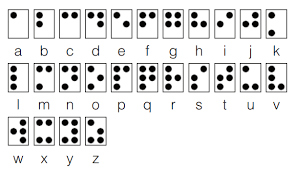|
Teaching Beginning Braille Reading – Some Teaching Strategies
The majority of Victorian students with vision impairments, including those who are blind, are enrolled full-time in their local schools. The students you are teaching may be beginning readers or may be older students who are making the transition from print to braille. Here are some strategies that will support your teaching. For Braille Beginners
0 Comments
Leave a Reply. |
Linda L
|

 RSS Feed
RSS Feed
